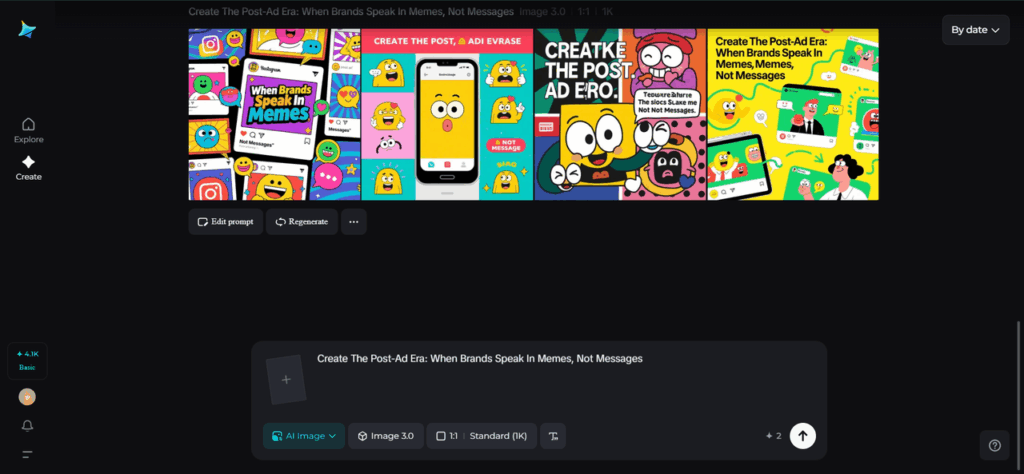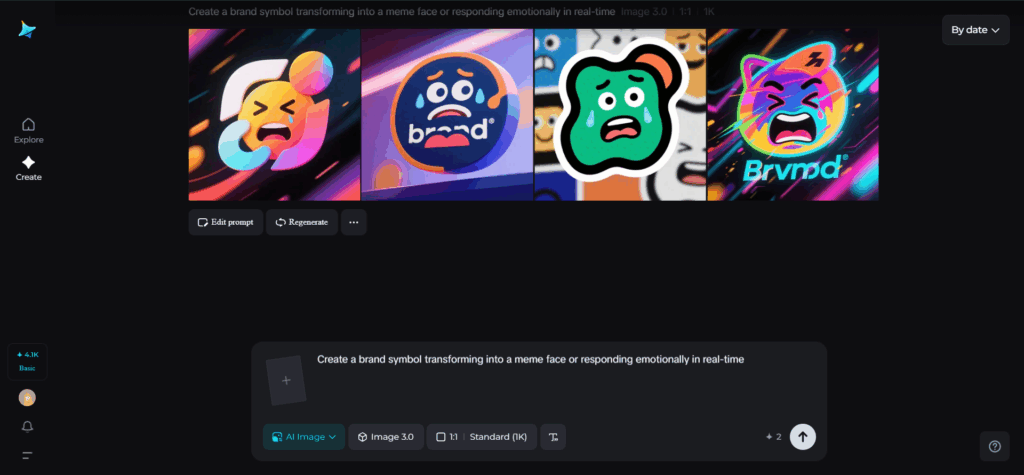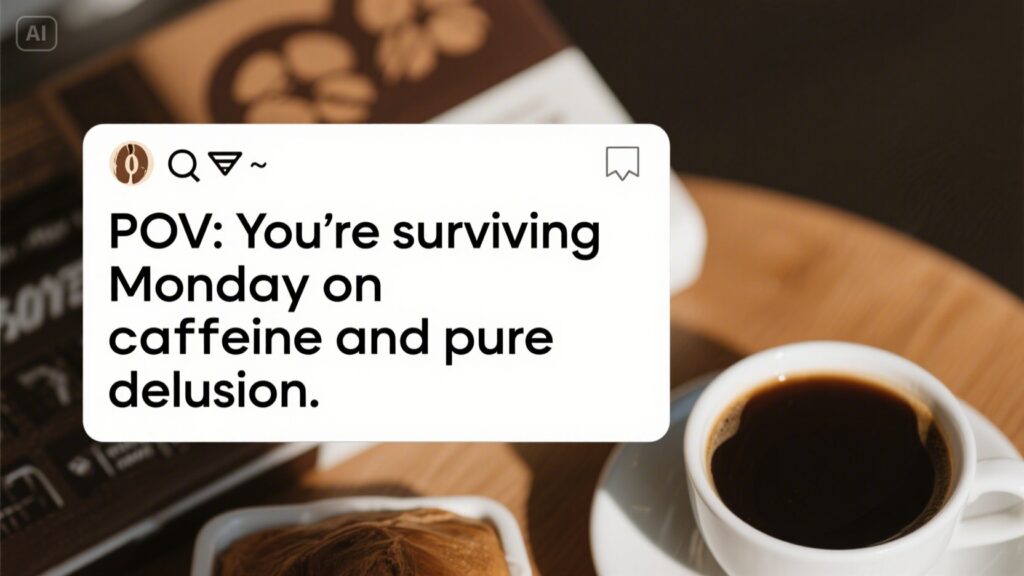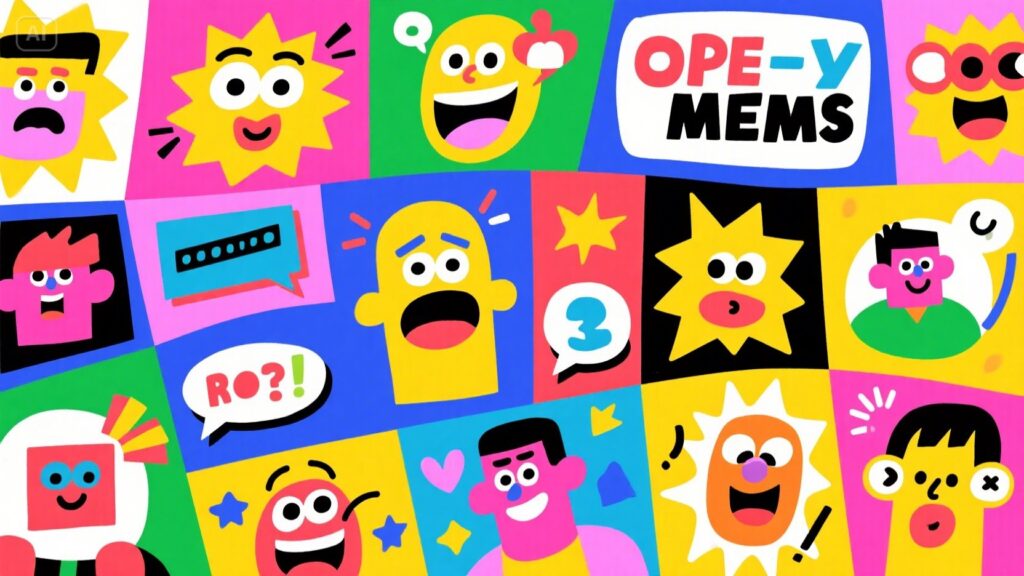Do you recall when ads attempted to persuade you? Today, they merely attempt to make you laugh first, be seen second, and perhaps click third. Welcome to the post-ad age — where brands don’t yell slogans, they whisper jokes, remix styles, and are part of the group chat masquerading as your best friend.
With platforms like Dreamina’s AI photo generator, marketers are now building such micro-moments with otherworldly accuracy — images that look like memes but flow like art. Every frame is built not for the billboard, but the timeline; not for applause, but for screenshots.
Because in this new world, the greatest compliment a brand can receive is no longer “nice campaign.” It’s “I forwarded this to my friend.”

Memes as the new mother tongue
At some point on the internet timeline, “content” became culture. Memes are no longer just something to be entertained by but are emotional currency. They have tone, irony, relatability — all the elements old-school ads couldn’t convey.
Brands took notice. Rather than declaring “buy our product,” they started declaring, “we get your sense of humor.”
A meme can accomplish what a billboard never could:
- Deliver humor quicker than a slogan
- Adjust on the fly to new moods or trends
- Invite community engagement (in the form of remixes, duets, captions)
- Blurs the border between creator and audience
And since memes live on imperfection — blurry screenshots, half-effort typography, and tongue-in-cheek tone — they are relatable. Relatability is the new persuasion.
From campaigns to conversations
Old-school advertising was straight-line: brief → message → visuals → delivery.
Meme-based branding is cyclical. The content lives, evolves, and comes back to you in surprising guises.
Rather than starting a campaign, brands start a conversation.
This is how that loop typically works:
- A brand publishes a meme or visual trigger.
- Users re-create it, re-caption it, or turn it into a trend.
- The remakes drive reach far greater than any paid ad.
- The brand reacts with more humor — and the loop restarts again.
It’s less “target audience” and more “inside joke.”
The anatomy of a brand meme
Why does a meme succeed when it has a logo behind it? Not luck — craft masquerading as anarchy.
A successful branded meme most often mixes together:
- Recognizability: Borrowing from the familiar templates or structures that feel native to the internet.
- Self-awareness: Laughing at itself before others do.
- Emotion: A combination of humor, authenticity, and relatability — but often regarding common struggles or micro-victories.
- Visual speed: Basic, quick-to-understand design that can withstand infinite resharing and screenshot compression.
Dreamina’s AI image generator enables designers to redo meme looks without sacrificing creativity — allowing them to play with style, color, or facial expression in a matter of seconds to match trends faster than ever before possible through traditional production.
Chaos as design language
Here’s the twist: meme design breaks all the old rules — misaligned text, stretched images, neon filters, or fonts that scream irony.
What used to be “bad design” now signals authenticity.
This anti-polish aesthetic connects with a generation that mistrusts perfection. The chaos says: “Hey, we’re not above the joke. We’re part of it.”
That’s because most designers today employ AI logo generator software not only to produce professional logos but also parody versions of them. Consider a brand symbol transforming into a meme face or responding emotionally in real-time. It’s self-mockery as marketing brilliance — a wink from the company itself.

Memes as emotional architecture
Behind the humor lies something profound: empathy.
Memes tap into shared emotional shorthand — exhaustion, joy, anxiety, relief — in a visual format that feels communal. Brands embracing meme culture are essentially saying, “We understand your moodboard.”
Think of how it works:
- A coffee brand might post “POV: You’re surviving Monday on caffeine and pure delusion.”
- A beauty brand could write “When your skin finally clears and the universe decides to test you again.”
- A streaming service could say in jest, “We drop emotional trauma every Friday. Enjoy!”
Every line is linked by feeling first, product second.

Brand voice, now in lowercase
Tone is everything. The shift from “We’re proud to present our new campaign” to “ok but this ad kinda slaps?” represents more than linguistic play — it’s a cultural handshake.
Lowercase text, emojis, and casual phrasing are not laziness; they’re intimacy. This voice doesn’t talk at people — it talks with them.
When paired with the right visuals, the result is storytelling disguised as a meme. Quick. Disarming. Sticky.
Remix-friendly images and meme systems
Good memes are open-ended — simple to copy, edit, and customize. Clever brands are actively designing their images to encourage remixing.
And that is where the AI poster generator finds its sweet spot. Designers get to produce layered, modular images where users can switch text, change faces, or change moods — extending the template’s life far, far beyond its launch date.
By involving fans in the process as open-source humor projects, brands give them ownership. Each remix is free distribution — and increased emotional ownership.

Micro-moments, macro impact
In the post-ad era, success isn’t gauged by view metrics or billboard visibility — it’s gauged by micro-engagements. A saved post. A shared screenshot. A friend tagging another with “this is us.”
Those moments of attention accumulate and build culture bit by bit. The aggregate result is trust — not coerced loyalty, but organic affinity.
Because when individuals reproduce your joke, they’re not merely recalling your brand; they’re making you belong.
From virality to vitality
Meme culture started as a competition for virality, but the most intelligent brands are focusing on vitality. What that means is content that does not simply surge, but perseveres in emotional connection.
Age well is a meme that is anchored in universal feelings — exhaustion, camaraderie, optimism, and ridiculousness. They become cultural reference points, not one-day fads.
And companies that excel at this cadence become less advertisers and more chroniclers of the shared internet mythology.

Dreamina and the art of post-ad storytelling
Dreamina is not merely a creative tool — it’s a partner in this new cultural vocabulary. Its AI image generator makes for immediate, expressive images that can change as rapidly as meme trends. Whatever your conception of surreal humor, emotional irony, or visual satire, Dreamina allows ideas to breathe, mutate, and play.
Add to that smart editing and design tools, and you have a system designed for creators that flourish in disorganization — post-ad age artists.
Because today’s greatest campaigns aren’t campaigns anymore. They’re collective emotions, viral rumors, and elegantly ridiculous cultural puns.
And with Dreamina, those puns can look as great as they make you feel — every meme, a work of art in motion.


Leave a Reply